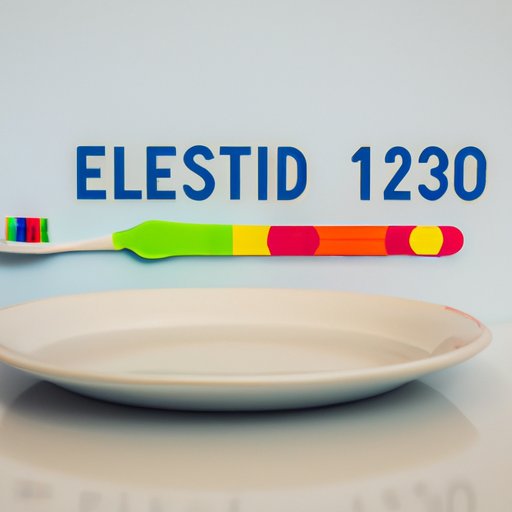Introduction
Whether you’re a morning person or a night owl, keeping up with your daily dental hygiene routine is essential for maintaining healthy teeth and gums. But when it comes to brushing your teeth after eating, the timing matters. How long should you wait after eating to brush your teeth? And what are the risks of not brushing at the right time? In this article, we’ll explore the science behind waiting to brush your teeth after eating and provide practical tips for maintaining good oral hygiene.
How Long Should You Wait After Eating to Brush Your Teeth?
It’s important to wait after eating before brushing your teeth. According to the American Dental Association (ADA), “brushing too soon after meals and snacks can do more harm than good.” When you eat, certain foods and drinks can soften the enamel on your teeth, making it vulnerable to abrasion from your toothbrush. The ideal amount of time to wait after eating before brushing is 30 minutes.

Timing is Everything: When to Brush Your Teeth After Eating
Different foods and drinks have different effects on your teeth, so it’s important to consider the type of food or drink you have consumed when deciding when to brush your teeth. For example, acidic foods and drinks like citrus fruits, tomatoes, and soda can weaken your tooth enamel, making it more susceptible to damage from brushing. Other factors to consider include the texture of the food or drink (i.e. crunchy versus smooth) and the temperature (i.e. hot versus cold).
A Guide to Brushing Your Teeth After Eating
Here are some steps to take when brushing your teeth after eating:
- Wait at least 30 minutes after eating to brush your teeth.
- If you have consumed acidic foods or drinks, wait an hour before brushing.
- Rinse your mouth with water after eating to remove any food particles.
- Use a soft-bristled toothbrush when brushing.
- Brush gently in circular motions and avoid scrubbing.
- Floss between your teeth.
- Use a fluoride toothpaste.
Brushing Your Teeth After Eating: What’s the Best Time?
Brushing your teeth at the right time can help protect your teeth from decay and cavities. According to the ADA, “brushing twice a day with a fluoride toothpaste is one of the most important things you can do to help prevent tooth decay and maintain good oral health.” Waiting to brush your teeth after eating also helps prevent the erosion of tooth enamel, which can cause sensitivity and discoloration.

The Science Behind Waiting to Brush Your Teeth After Eating
Certain foods and drinks contain acids that can weaken your tooth enamel. According to a study published in the Journal of Clinical Dentistry, “the acid content of beverages and certain foods can lead to enamel erosion, which can increase the risk of tooth decay and other dental problems.” Acids in food and drink can also cause acid erosion, which is the gradual wearing away of tooth enamel.

Practical Tips for Brushing Your Teeth After Eating
Here are some practical tips for brushing your teeth after eating:
- Maintain a regular brushing routine by brushing twice a day with a fluoride toothpaste.
- Choose a soft-bristled toothbrush and toothpaste that is formulated for your specific needs.
- Brush gently in circular motions and avoid scrubbing.
- Floss between your teeth at least once a day.
- Rinse your mouth with water after eating to remove any food particles.
Conclusion
In conclusion, when it comes to brushing your teeth after eating, timing is everything. It’s important to wait after eating before brushing your teeth to prevent the erosion of tooth enamel caused by acids in food and drink. The ideal amount of time to wait after eating before brushing is 30 minutes. Following a regular brushing routine and choosing the right toothbrush and toothpaste can help maintain good oral hygiene.
(Note: Is this article not meeting your expectations? Do you have knowledge or insights to share? Unlock new opportunities and expand your reach by joining our authors team. Click Registration to join us and share your expertise with our readers.)
